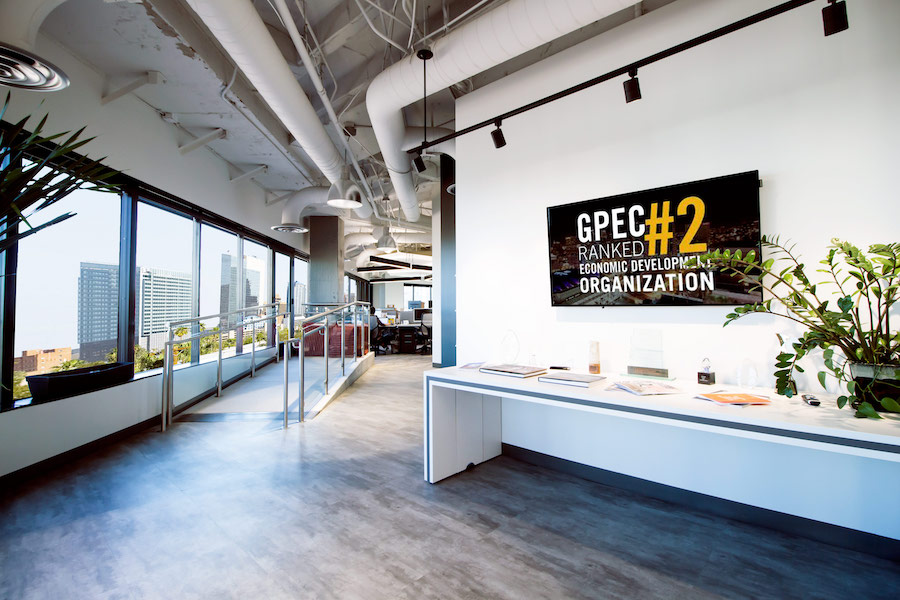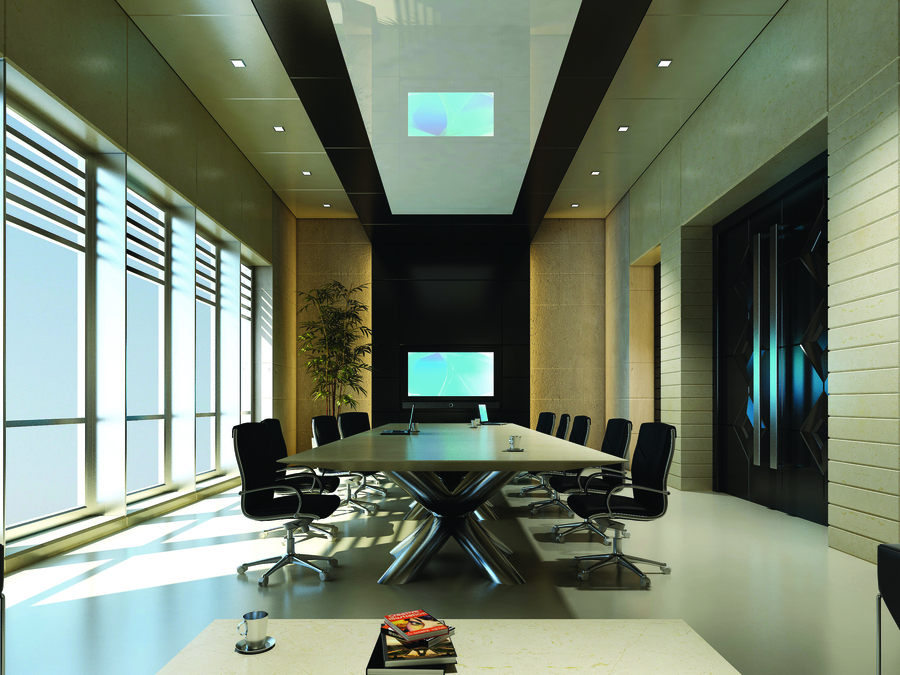It’s Complicated.
Many companies have adopted a new breed of unified communications solutions like Slack, Microsoft Teams, Zoom, Google Workspace, and others. The reasons are straightforward – these platforms put all the necessary forms of collaboration and communication under one roof with excellent integration. Voice, messaging, videoconferencing, online meetings, document sharing, and mobile applications are all within a common interface with one login credential and strong administrative features for the organization.
on Wednesday, 04 May 2022.
Posted in Unified Communications Solutions, Scottsdale, AZ , Unified Communications Solutions
Digital Signage Is More than Just a Marketing Medium
Digital signage is a popular solution for imparting information that informs and engages various audiences and constituencies. Two broad technology advances are adding additional intelligence to digital signage solutions to make them even more effective, engaging, and important. One is cloud-connected management, and the other is artificial intelligence (AI).
You might already be thinking, aren’t those two areas the underpinnings of almost every smart device today? Of course, you’re right. But it wasn’t so many years ago that many digital signage systems were based on a local player attached to a display screen via USB. Today, cloud-based content management and monitoring make it much easier to keep a large network of digital displays of all sizes running fresh content and enabling more sophisticated communication campaigns. In addition, AI enables more intelligent and customized approaches to digital signage display solutions. Let’s take a look at three innovative applications for digital signage.
on Friday, 22 April 2022.
Posted in Digital Signage Display – Tempe, AZ, Digital Signage Display
Access, Control, and Usability Are Keys to Success
Will the hybrid work model be just a passing fad? As pandemics fade into memory, will companies demand that workers get back into physical offices in the name of productivity and fostering interpersonal relationships? We can’t predict the future, but the reality is that hybrid work was already a growing trend thanks to technological advancements.
Twenty years ago, knowledge workers could telecommute (a now quaint-sounding term) with voice and internet access. The experience was less than perfect, as the integration of offsite staff into onsite meetings and activities was not quite there with the existing technology. The advent of unified communication and collaboration (UCC) solutions provided powerful and scalable tools for workers to have a common platform that worked not only in the office but anywhere with a solid internet connection.
These solutions, embodied by such platforms as Cisco/WebEx, Microsoft, Zoom, RingCentral, Google, and others, provide a rich set of tools for knowledge work, unifying voice, video, messaging, collaboration, presence, and meeting tools into easy-to-use software. Further, these solutions have all moved into cloud-hosted SaaS (Software as a Service) models, making them easier to administer, manage, and scale.
How does this unified communication as a service model impact hybrid work? Read on below for more
on Friday, 15 April 2022.
Posted in Unified Communication as a Service – Scottsdale, AZ, Unified Communication as a Service
Software and the Cloud Have Changed the Game
Recently we posted about how the user experience is driving the modernization of AV systems and services. In the modern, connected world, everyone is a user and consumer of AV technology. The pandemic of the past two years created Zoom experts out of grandparents that had never video-conferenced in their lives. With the seismic shift to hybrid work models, the ability to see and talk to someone on a computer or device is merely baseline functionality.
So, users in the workplace - home workplaces too – have high expectations for AV systems. They need to be easy to use, allow them to multitask, hold large and inclusive meetings, and have sophisticated tools that integrate easily to share information and freely collaborate. As we noted – and you already know – this is a software-driven world. The smartphone showed the world how you build a smart device with an almost-ready-for-prime time feature set and proceed to make it far more powerful and usable with three years of software updates. Tesla applies that model to automobiles, in an industry not previously known for any upgrades that didn’t involve buying a new vehicle. One of the last industries to catch on is AV, and that presents new challenges.
Modern smart conference room technology is more dependent on software than hardware for the new features and services that today’s workforce expects and demands. And software is a different model when it comes to management. Keep reading below for an outline of three trends that are changing the game in AV services management.
on Monday, 11 April 2022.
Posted in Smart Conference Room Technology
Digital Signage Offers a Highly Visible Communication Channel for Hybrid Work Models
Digital signage has been around for some time with many successful applications, from restaurants to shopping centers to building lobbies and transportation hubs. The advantages of digital display technologies are numerous and well-understood, but companies are taking a closer look at this solution for a new area that is not so well-understood – hybrid workplaces.
on Tuesday, 22 March 2022.
Posted in Digital Signage – Scottsdale, AZ, Digital Signage
Consumer Technology and Software Has Changed User Expectations
Come with us, for a bit, for a walk back in time to the 1980s. That decade saw the dawn of the personal computing era. Until the advent of the personal computer (PC), computing power lay in data centers in mainframes and minicomputers. There were no such things as “apps,” but there were complex applications to run financial and operational aspects of companies.
Most importantly, however, before PCs (we mean all of them here of any operating system), the IT department controlled all that computing power. In those days, IT was called by many other names (sometimes not flattering ones), but generally, professional workers had little control over what IT did, and they might wait years to be able to take advantage of that computing power to make their job easier.
on Thursday, 17 March 2022.
Posted in AudioVisual Services –Phoenix, AZ, AudioVisual Services
Exploring AV Managed Support Models and Their Benefits
Managed support services are well understood and utilized in the IT world, and they are increasingly popular for various reasons. Perhaps one reason not discussed as much is the sheer breadth of technology in use today in organizations of all sizes. In IT, support has to cover services like cloud infrastructure, SaaS (software as a service), networks, wireless and mobile computing, security and cybersecurity, and much more. This breadth requires a significant amount of expertise and training, as well as specialized tools for monitoring and user support.
AV systems in organizations have gone through a similar evolution; they now encompass a wide range of technology and have joined the IT and IoT world as IP-based connected systems requiring the same security and monitoring levels as other IT systems. That means that user support must also include specialized training and tools, further burdening chronically understaffed IT departments. Managed support services for AV can ease the burden on organizations and provide the specialized services needed. Let's explore several models below and their potential benefits for your organization.
on Thursday, 10 March 2022.
Posted in Managed Support Services – Tempe, AZ, Managed Support Services
A Managed Service Can Fill in the Holes in AV Security Technology
Once upon a time, IT was IT, AV was AV, and never the twain shall meet. Well, those days are long gone. AV devices are smart, connected, special purpose computers, and the digital convergence of video, audio, and communication over IP has ensured that they all meet on the same networks.
While in the past, the isolation of AV systems meant that they had some immunity from hacking and online attacks, today, they may be as vulnerable as any other connected system. IoT security is a much-discussed subject these days, and AV devices are part of the IoT (Internet of Things). The problem? While other connected computers and systems have benefitted from either native or third-party solutions that add layers of security to those systems, AV technology has lagged in that regard.
on Monday, 28 February 2022.
Posted in AV as a Service – Tempe AZ, AV as a Service
 Integrating Unified Communications Solutions with Legacy Systems: Is It Worth It?
Integrating Unified Communications Solutions with Legacy Systems: Is It Worth It? 







